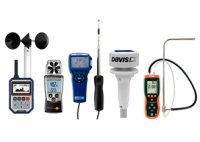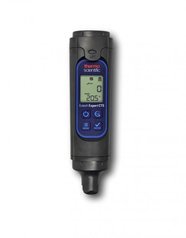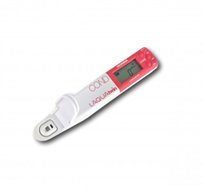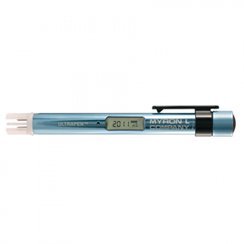The Relationship Between Conductivity, Salinity, TDS, and Temperature
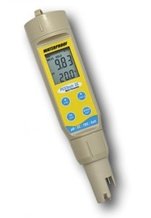
Making sense of the complex relationship between conductivity, salinity, TDS, and temperature can be confusing. In this guide, our scientists explain the relationship between these four parameters – without the complex scientific jargon.
What is Conductivity?
Electrical Conductivity (often abbreviated to Conductivity or EC) measures ions’ concentration within a sample. Conductivity is a measure of the ability of a substance to transmit an electrical current over a defined area. The term for the measurement unit of electrical conductivity is Siemens. Measurements will display as either:
- S/cm (Siemens/centimetre)
- mS/cm (millisiemens/centimetre); or
- µS/cm (microsiemens/centimetre.
For example, distilled water is a poor conductor of electricity as it contains no ions. Water with salts and other dissolved inorganic chemicals will have a higher ionic concentration, and therefore, higher conductivity level.
The Relationship Between Conductivity and TDS
TDS stands for total dissolved solids. TDS estimates the mass of organic and inorganic dissolved solids within the measured solution typically expressed as mg/L or parts per million (ppm).
The dissolved materials impact conductivity, making it possible to estimate TDS from a conductivity reading using a conversion factor. Make sure to use the correct TDS factor for accurate TDS readings.
The Relationship Between Conductivity and Salinity
Salinity is a metric like TDS in that it estimates the level of salt in a water sample. To calculate salinity levels, apply a conversion factor (usually ~0.5) to conductivity readings. It’s common to express salinity as parts per thousand (ppt) or g/L.
The Relationship Between Conductivity and Temperature
Temperature directly affects conductivity by increasing the solubility and ionic mobility of salts and minerals. Therefore, for comparability and accuracy, measure conductivity at a standardised temperature or correct a temperature reading to a standardised temperature. For corrected results, most newer conductivity meters incorporate automatic temperature compensation (ATC).
Conductivity Measuring Applications
- Agricultural: Conductivity can indicate the salinity, dissolved nutrient, and dissolved solid levels present in the soil. This information can help you make good decisions about irrigation and fertilising.
- Aquaculture and Aquariums: A conductivity meter makes it straightforward to monitor water salinity and levels of total dissolved solids. You can manually convert conductivity readings to total dissolved solids (TDS) or salinity concentrations. Alternatively, you can use a conductivity meter with this feature built-in. Professionals use these readings to help them maintain healthy aquatic environments.
- Water Treatment: Keeping conductivity and salinity measurements within defined ranges is key to maintaining healthy and sustainable ecosystems in our oceans and waterways, especially where wastewater discharges occur.
- Boiler Maintenance: Feedwater within boilers contains impurities, and any build-up of contaminants impacts the boiler's efficiency and safety. A conductivity meter enables you to monitor boiler water impurity levels and determine when to implement a boiler blowdown.
- Swimming Pool Maintenance: A conductivity meter can help you check your swimming pool or spa’s chemical balance. Use a conductivity meter with an automatic salt conversion function or manually convert conductivity readings to determine salt concentrations to determine any corrective action.
Conductivity Meter Examples
To help you find the best conductivity meter for your application, the Instrument Choice Scientists have selected four meters with differing features. The featured meters include models that can convert to TDS or salinity measurements.
Expert CTS Pocket Tester
|
Horiba Laquatwin Conductivity Meter
|
Ultrapen Pt1 Conductivity, Salinity and TDS Meter
|
Waterproof Multi-Purpose Meter
|
Conclusion
Conductivity meters are a practical and affordable way to determine a nutrient content of a solution. Thanks to the intertwined relationship between conductivity, TDS, Salinity, and Temperature, you will often find meters that measure multiple parameters.
Need more information on conductivity meters? Speak with an Instrument Choice Scientist! Call 1300 737 871 or email [email protected].
Also interesting
Scientific Industries are world leaders in the vortex and mixing technology industries. They offer an exceptional line of laboratory equipment.
This guide details the series of magnetic stirrers produced by Scientific Industries ranging from small programmable models for everyday laboratory use to multi-position and high-capacity models for complex laboratory tasks.
Get the scientists’ guide to Scientific Industries Magnetic Stirrers.
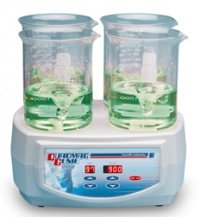
Difficult to pronounce but easy to define, an anemometer is a device used to measure wind speed and often wind direction. The uses for anemometers will vary depending on the type, and this requires an understanding of the five main anemometer types.
Dive in and learn about the five main types of anemometers and their specific uses.
